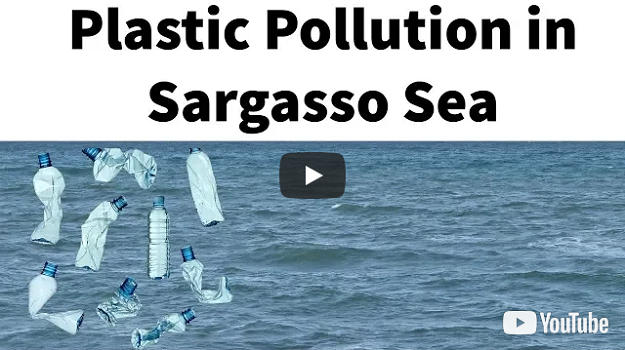• The Sargasso Sea is a vast patch of ocean named for a genus of free-floating seaweed called Sargassum.
• While there are many different types of algae found floating in the ocean all around world, the Sargasso Sea is unique in that it harbors species of sargassum that are ‘holopelagi’ – this means
that the algae not only freely floats around the ocean, but it reproduces vegetatively on the high seas. Other seaweeds reproduce and begin life on the floor of the ocean.



• Sargassum provides a home to an amazing variety of marine species. Turtles use sargassum mats as nurseries where hatchlings have food and shelter.
• Sargassum also provides essential habitat for shrimp, crab, fish, endangered eels, as well as white marlin, porbeagle shark, and dolphin fish, Humpback whales annually migrate through the Sargasso Sea. Commercial fish, such as tuna, and birds also migrate through the Sargasso Sea and depend on it for food.
• Despite its remote location in the Atlantic, the Sargasso Sea is not immune from the
impacts of human activities. A recent global analysis of human impacts on marine
ecosystems concluded that the Sargasso Sea has sustained moderate to high impacts over time
• The Sargasso Sea is surrounded by the Atlantic Ocean and is collecting plastic
debris due to the clockwise currents.
• Plastic flocks together with patches of sargassum which on their turn flock
together in so called windrows, long lines of brown islands, floating on the water,
hand in hand.
pollution from debris that accumulates amongst the floating Sargassum is evident as it is trapped by the oceanic gyre

• Marine animals including birds, turtles and fishmay become entangled in this plastic debris leading to choking and strangulation, or they may eat it, compromising their nutrition, and possibly exposing them to toxic chemicals in the plastics.
• found a high incidence of plastics, including plastic bags and strips, caulking materials and vermiculite in posthatchling loggerhead turtles. The impact of microplastics on the marine environment has recently been reviewed .





















 WhatsApp
WhatsApp